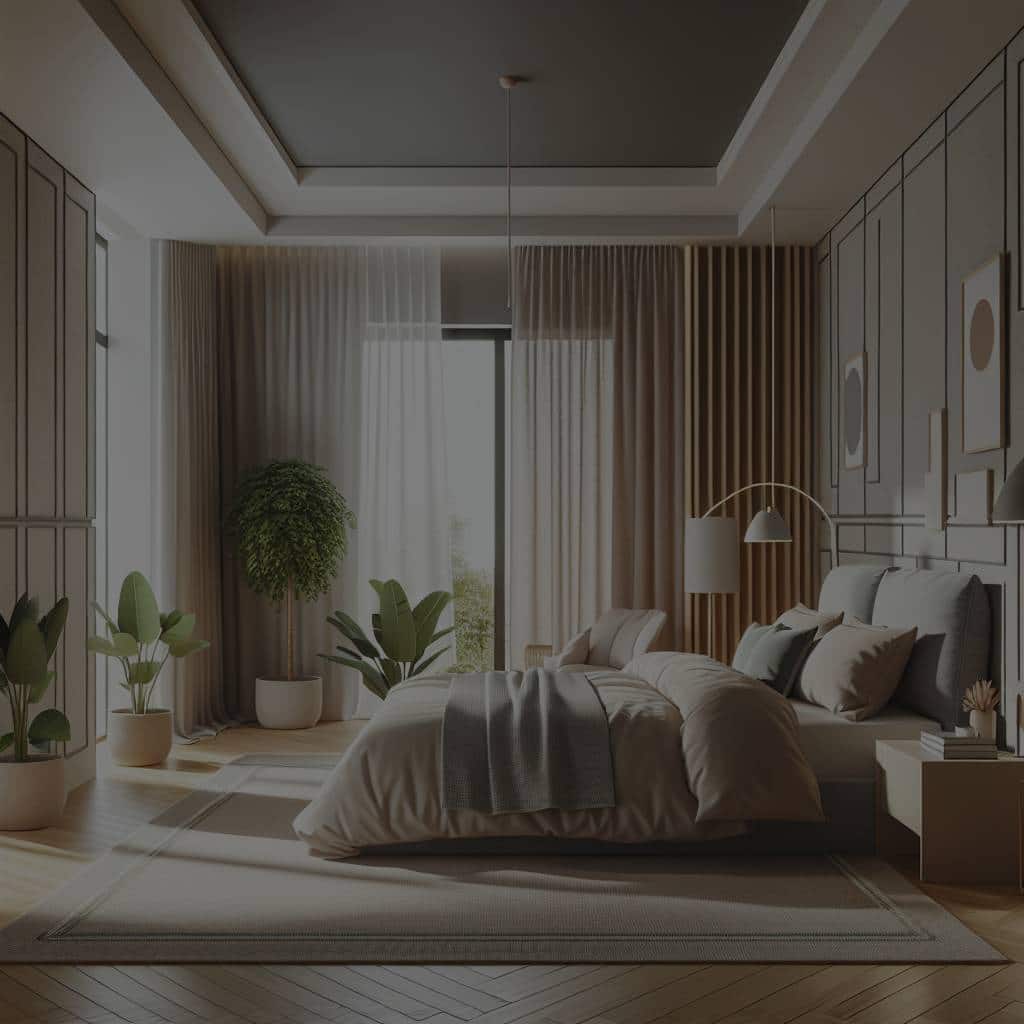In our quest for comfortable and restful sleep, we often overlook the reality that our bedrooms can be a hotbed for allergens. Dust mites, pet hair, mold spores, and various other allergens can lurk in our bedding, carpets, and air, triggering uncomfortable allergy symptoms. However, you can create an allergy-friendly bedroom using hypoallergenic materials. This article aims to help you understand how to design an allergy-free space, promoting healthier sleep and a better quality of life.
Understanding Allergies and Their Triggers in the Bedroom
Before diving into how to design an allergy-friendly bedroom, it’s crucial to understand what allergies are and how they’re triggered. Allergies are essentially reactions of your immune system to substances it considers harmful, even though they might not be. These substances are called allergens, and they can be anything from dust and mold to pet hair and mites.
Also to discover : What Are the Best Tips for Creating a Child-Safe Living Room Layout?
When you’re exposed to allergens, your body responds by releasing histamines, leading to symptoms such as itchy eyes, runny nose, sneezing, or skin rashes. In your bedroom, these allergens can be present in the mattress, bedding, carpet, or even the air. It’s worth noting that dust mites are among the most common allergens found in bedrooms, often nesting in mattresses and feeding off dead skin cells.
The Benefits of Hypoallergenic Materials
Hypoallergenic materials can greatly reduce the presence of allergens in your bedroom, helping you keep allergies at bay. The term ‘hypoallergenic’ means that the product or material is less likely to cause an allergic reaction compared to other products. For instance, hypoallergenic bedding, such as dust mite-proof covers for mattresses, pillows, and duvets, can help lower the risk of dust mite allergies.
Also read : What’s the Ideal Lighting for a Home Photography Studio?
Aside from bedding, there are also hypoallergenic materials for rugs, curtains, and even paints. Using these materials can minimize allergens, thereby lessening your allergy symptoms and helping you sleep more soundly.
Choosing Hypoallergenic Bedding and Mattresses
Your bed is the centerpiece of the bedroom and, unfortunately, a favorite hiding spot for dust mites and other allergens. Therefore, it’s vital to choose hypoallergenic materials for your bedding and mattress.
When shopping for a mattress, opt for one that’s made of hypoallergenic materials, such as latex or memory foam. These materials are resistant to dust mites, mold, and mildew. Moreover, choose a mattress with a removable and washable cover for easier cleaning.
As for bedding, go for dust mite-proof covers for your pillows, duvet, and mattress. These covers are designed to prevent dust mites from penetrating the bedding. Additionally, choose hypoallergenic sheets, pillowcases, and blankets, preferably ones made from organic cotton, bamboo, or silk.
Maintaining an Allergy-Free Air Quality
Air quality plays a significant role in allergy management. Allergens, such as dust, pet hair, and mold spores, can float in the air and trigger your allergies. Therefore, maintaining an allergy-free air quality is a key aspect of designing an allergy-friendly bedroom.
To keep the air in your bedroom clean, consider investing in an air purifier with a HEPA filter. These devices can remove up to 99.97% of airborne allergens. Regularly changing the filters in your HVAC system can also help reduce allergens in the air.
Moreover, regular cleaning can help keep allergens at bay. Vacuum your bedroom at least once a week and use a damp cloth to dust surfaces. If you have pets, restrict them from entering your bedroom to prevent pet hair and dander from contaminating your sleeping space.
Incorporating Allergen-Reducing Design Elements
Apart from hypoallergenic materials and clean air, there are other design elements you can incorporate to help reduce allergens.
Firstly, limit the number of textiles in your bedroom. Rugs, curtains, and upholstered furniture can trap allergens. Opt for hard surface flooring instead of carpeting and consider blinds or shades instead of curtains.
Secondly, avoid clutter. Books, knickknacks, and other items can collect dust and provide hiding places for allergens. Keep your bedroom minimalist and tidy, which will not only reduce allergens but also make cleaning easier.
Lastly, prevent mold growth by controlling humidity. Use a dehumidifier if necessary, and ensure your bedroom is well-ventilated to prevent dampness that can lead to mold growth.
In conclusion, creating an allergy-friendly bedroom involves understanding allergies, using hypoallergenic materials, maintaining clean air, and incorporating allergen-reducing design elements. With these steps, you should be well on your way to an allergy-free, healthier, and better sleep.
Selecting Hypoallergenic Curtains and Rugs
When designing an allergy-friendly bedroom, every detail counts, including your curtains and rugs. These seemingly insignificant items can trap dust mites, pet dander, and other allergens, contributing to your allergy symptoms.
Curtains made from dense and heavy fabrics can accumulate more allergens compared to those made from lighter materials. Therefore, it’s best to choose hypoallergenic curtains made from materials such as polyester or nylon, which are less likely to attract dust mites. For an even safer option, consider allergy-proof blinds or shades, as these are easier to clean and less likely to trap allergens.
As for rugs, they can add warmth and style to your bedroom but can also be a haven for dust mites. If you decide to have a rug, select one made from hypoallergenic materials. Options include rugs made from natural fibers like jute, sisal, or seagrass which are resistant to dust mites. Alternatively, you can opt for low-pile rugs made from synthetic fibers, as they are easier to clean compared to high-pile rugs.
A crucial tip is to regularly clean your curtains and rugs to help reduce the amount of allergens they hold. Use a vacuum cleaner with a HEPA filter, which can capture up to 99.97% of airborne particles, ensuring your curtains and rugs are as allergen-free as possible.
Using Allergy-Resistant Paints and Wallpapers
The walls of your bedroom can also harbor allergens. Traditional paints and wallpapers can trap dust, pet dander, and mold spores, exacerbating your allergy symptoms. However, there are alternative options that are allergy-friendly.
Selecting the right paint can make a substantial difference. Anti-allergy paints are now available in the market. These paints contain antimicrobial agents that inhibit the growth of mold and mildew, both of which can trigger allergies. Additionally, these paints are resistant to dust and easy to clean.
Wallpapers can also contribute to the presence of allergens in your bedroom. Choose hypoallergenic wallpapers that are resistant to mold and mildew. If possible, avoid textured wallpapers as these can trap dust and other allergens.
With the right selection of hypoallergenic materials for your curtains, rugs, paints, and wallpapers, you can significantly decrease the number of allergens present in your bedroom, ensuring a healthier night sleep for people with allergies.
Conclusion
Designing an allergy-friendly bedroom is a comprehensive process that requires attention to every detail. From choosing hypoallergenic bedding and mattresses to maintaining an optimal air quality, every step is crucial in reducing allergens.
Utilizing hypoallergenic materials for curtains, rugs, paints, and wallpapers can help create an allergy-free space. Regular cleaning, limiting clutter, and controlling humidity are also key in maintaining an allergy-friendly environment.
By understanding the importance of each detail, from the larger elements like mattresses and bedding to smaller areas like curtains and rugs, you can create an inviting bedroom space that promotes better sleep and well-being. With the right approach, you can turn your bedroom into a haven for restful sleep, free from allergens and allergy symptoms. Remember, your comfort and health are worth the investment in hypoallergenic materials and designs that help reduce allergens.











